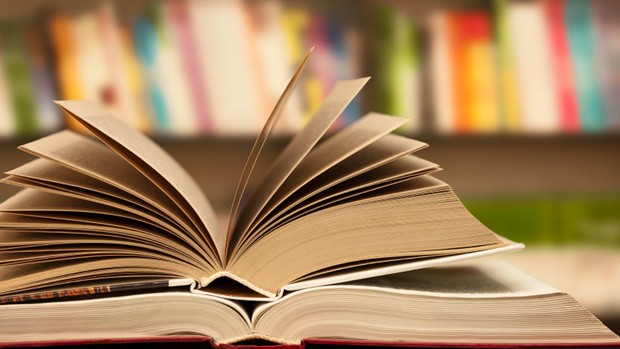
Numbering over 100, they, in various simple and complex combinations, are part of us and our world in all senses, making up everything in, on, with or around us - especially the electronic gadgets that seem to have become appendages of certain people. But only a third of these "basic building blocks" of matter are known or encountered commonly and not even half are in their "original" state or even visible! The story of the 118 chemical elements is, however, most fascinating and is in essence a history of humankind - not only its science, but economy, biology, colours, language and culture too.
Gold, silver, iron, platinum, aluminium, tin, copper, zinc, mercury, iodine and carbon are elements likely to have been seen and even held in the hand, while oxygen, nitrogen, hydrogen, neon, helium, neon and chlorine are known but not seen and sodium, lithium, potassium, flourine, calcium, silicon and sulphur are among those used in compound form.
Those fond of murder mysteries involving poisoning would know of arsenic - and polonium due to a recent real-life event. A handful of others - barium, magnesium, cobalt, radium, uranium, cadmium, tungsten, bismuth - may sound familiar due to various reasons but what about indium, scandium, krypton (not Superman's home planet!), astatine, zirconium, yttrium, ytterbium, palladium, tantalum, praseodymium and 70-odd others?
The great masses of people who are not chemical scientists or metallurgists are unlikely to know most elements or even care about them. But for those interested, there are several authors who can acquaint them with the Periodic Table's various inmates and their eventful and picturesque history - how and by whom they were found and named and what roles they play - since chemistry as taught in schools only focusses on their mere physical and chemical properties (not useful outside of exams).
My own first encounter with the story of the elements was due to the beneficence of the then Soviet Union. As many eager readers growing up across India in the 1980s would recall, one viable source of books was very reasonably priced (mostly in double digits) oeuvre of the Moscow-based Mir and Progress Publishers.
D.N. Trifonov and V.D. Trifonov's "Chemical Elements: How They Were Discovered" (Mir, 1982 - it cost Rs.10 then) was the first on the topic I read.
Trifonov was a most engaging and prolific writer who penned several books that made science enjoyable - "Silhouettes of Chemistry" was packed with stories about various fascinating facets and applications, "The Price of Truth: The Story of Rare-Earth Elements" about the lanthanides or elements 57 to 71 which get one place in the Periodic Table and a special row beneath (but punch above their weight in being the essential ingredients in making devices of modern entertainment, communication and medical technology possible).
Another was on the actinides (radioactive elements 89 to 103) (same arrangement), whose name might have been "On the Trail of Super-heavy Elements", but I am not sure since I have lost my copy.
Then there was "On Rare and Scattered Metals" by S. Venetsky (Mir, 1981), a compendium of interesting facts, curious incidents and tales associated with a dozen or so rare metallic elements.
Unfortunately, these books are no longer easily available. But for those interested, there are many more.
Two personal accounts of how the elements are intertwined with our lives are Italian chemist and Holocaust survivor Primo Levi's (1919-87) "Il sistema periodico (The Periodic Table)", a collection of 21 short pieces based on episodes from his life and each related in some way to an element, and British neurologist Oliver Sacks' (1933-) "Uncle Tungsten: Memories of a Chemical Boyhood" (2001) about his formative years and fascination with chemistry.
Wide-ranging accounts include Sam Kean's "The Disappearing Spoon: And Other True Tales of Madness, Love, and the History of the World from the Periodic Table of the Elements" (2011) and Hugh Aldersey-Williams' "Periodic Tales: A Cultural History of the Elements, from Arsenic to Zinc" (2012), both vividly exotic romps across the globe and history.
The only difference is the approach - Kean takes disparate bunches of elements, numbering three to seven or eight (even 12 in one case) and profiles them, while Aldersey-Williams takes one random element at a time.
A more visual account is Theodore Grey's "The Elements: A Visual Exploration of Every Known Atom in the Universe" (2012) (photographs by Nick Mann) or Paul Parsons and Gail Dixon's "The Periodic Table: An Indispensable Guide to the Elements" (2014) though the former edges slightly ahead due to the author's penchant for collecting elements (and the scrapes this gets him in).
There may be various ways to understand our world - the elements provide one of the most comprehensive!
(22.03.2015 - Vikas Datta is an Associate Editor at IANS. The views expressed are personal. He can be contacted at vikas.d@ians.in )
A case of cyber fraud has come to light in Madhya Pradesh. In this case, the victim of fraud neit
After South, Rashmika Mandanna is now proving her acting prowess in Bollywood as well. Following
Mumbai Indians Win IPL 2023 First Match Against Delhi Capitals. In the 16th match of IPL 2023, Mu
Prime Minister Narendra Modi introduced Corona vaccination through video conferencing at 11.05 am
Trump played friendship with India! Indians living in America were allowed to stay for so many days
new Delhi. Due to Corona virus, the US government has allowed India's H-1B visa holders and green
Ukraine's drone aircraft attacked two air bases considered to be Russia's most secure. On Monday,
After Natasha Stankovic and Hardik Pandya, another cricketer's married life has been shaken. Indi
Heavy rains are occurring in the country from Himachal Pradesh to Kerala. There is a flood situat
Today is the 10th and important day of farmers' protest against agricultural laws. Negotiations a
Samsung Galaxy A04s manufacturing begins in India, know the features of this cheap 5G smartphone
Samsung Galaxy A04s: Samsung is preparing to launch its new entry-level smartphone Samsung Galaxy